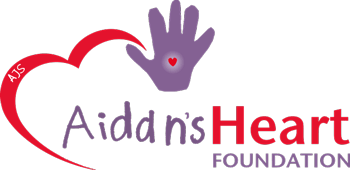Written by Chris Griesser, AHF Board Member, Former UPenn Flight Medic, Medical Student and father of two young children
In early June, Danish football (soccer) midfielder Christian Eriksen suffered a sudden cardiac arrest (SCA) during a Euro 2020 match. In case you have not heard the news or seen the photos or video, a brief synopsis – Eriksen, a midfielder, had been involved in the previous play which resulted in an out-of-bounds ball. As each team positioned themselves for the ensuing throw-in, Eriksen stumbled a bit, then collapsed face forward onto the pitch. His heart had stopped beating, or at least stopped beating efficiently enough to move blood to his brain – he was in cardiac arrest.
It’s what occurred next that makes this story special. Christian’s teammates recognized he was having a medical emergency and motioned for help. Medical staff was at his side within seconds and CPR was initiated. An AED was applied and a single shock was administered which converted Eriksen’s lethal heart rhythm back into an organized one. He was moved from the field and transported to the hospital where he received an implantable cardioverter defibrillator (a personal AED implanted within his chest). Erisksen recovered fully with no ill-effect from this potentially fatal event.
Although they likely didn’t realize it at the time, Eriksen’s rescuers executed each step of the Chain of Survival in order, and with perfection.
Eriksen survived because those around him acted quickly and the proper tools were nearby. This was not a medical miracle.
Having participated in hundreds of medical resuscitations over the past 15 years, I can say I’m thrilled with Eriksen’s outcome, but I’m not impressed. Eriksen survived because those around him acted quickly and the proper tools were nearby. This was not a medical miracle. It was the result of prior CPR training and proper AED placement. Had this same situation occurred in a location without an AED, I have no doubt that the outcome would have been very different. In fact, about 90% of out-of-hospital SCA victims will not survive. Many are not given the most basic treatment – simple hands-only compressions – even when SCA is witnessed.
From what we have seen and read, Christian Eriksen’s resuscitation was perfect, but only because those around him were prepared. Most sudden cardiac arrest happens outside the hospital. If we are to increase survival from SCA, we need your help.
Understand the signs of SCA. Learn CPR. Know where public access AEDs are located. Aidan’s Heart Foundation has now placed over 110 AEDs throughout southeastern PA! Get involved… and YOU may save a life.
Contact Aidan’s Heart Foundation to learn how you can obtain CPR certification, get an AED for your community or school, or volunteer to help out!
